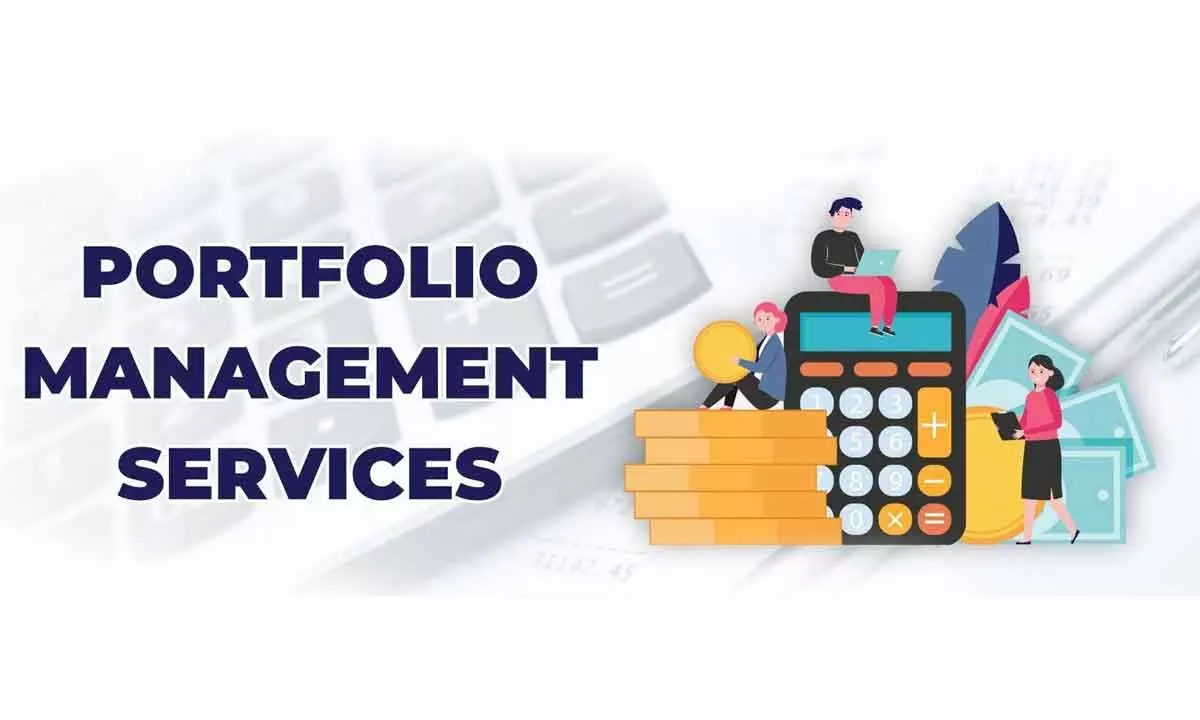How to choose a PMS investment?
Mutual Funds once only invested by a few have caught the attention of the general masses leading to heightened domestic inflows
image for illustrative purpose

The major benefits of investing in a PMS offering are the access to a professional management under the aegis of the regulator, continuous monitoring of the portfolio, transparency and customised advice
Of late, there’s so much of awareness about various investment products and services. The penetration of financial savings through non-traditional avenues like gold, real estate, etc has increased in the last couple of years. The overall buoyant economic conditions and the ease of transaction has enabled for further increase in the public participation. Mutual Funds (MF) once only invested by a few have caught the attention of the general masses leading to heightened domestic inflows. Trends have shown that there has been a phenomenal increase in the Assets Under Management (AUM) of Portfolio Management Services (PMS). These are sophisticated portfolio investment schemes that offer various strategies to generate return. PMS is a professional and devoted service that is responsible for making investment decisions on behalf of investors who opted for them. Of course, the most popular of them being equity, though there’re strategies that address the debt or fixed income too.
Unlike the MFs, the investment in an equity PMS has a relatively higher concentrated portfolio in-line with the investment objective/strategy to generate higher returns. To minimize wrong selection of investors into these products, Securities Exchange Board of India (SEBI) has mandated the minimum ticket size i.e. the investment into a PMS offering at 5 million Rupees, with any further contributions in these funds at multiples of 5Lakhs. This thus restricts primarily to Higher Net worthIndividuals (HNIs) considered to have a higher risk tolerance.
The risk mitigation guidelines in the MF allocations could create a dent for investors looking for anaggressive contribution. The restriction of allocation into a particular stock beyond a percentage of the fund could turn counterproductive. This could limit the chances of making outsized returns. Also, as the fund size increases it could turn difficult to navigate or be nimble to make appropriate changes as the structure is primarily meant to protect the smaller sized investors. So, through PMS, an investor’s portfolio unique and doesn’t add to the pool account, though the investment manager or portfolio/fund manager has the right to take investment calls within the purview of the specified fund objective.
These services are broadly defined in three different types, viz., discretionary, non-discretionary and advisory. A discretionary portfolio is where the choice as well as the timing of the investment decisions rest with the fund/portfolio manager. In the non-discretionary service, the fund manager only suggests the investment ideas while the choice and timing of the investment rests with investor, though the execution is handled by the fund manager. However, in an advisory model, the fund manager only suggests the ideas while the rest of the execution is left in the hands of the investor. In India, the most popular and prominent services are of discretionary nature.
The major benefits of investing in a PMS offering are the access to a professional management under the aegis of the regulator, continuous monitoring of the portfolio, transparency and customised advice. All these service providers are professionally run and operate under the regulator after availing the license and approval from the SEBI, who would conduct regular audit & compliance is mandatory making these investments safe though are subject to the market vagaries.
The recent boom in the AUM of these products has been attributed to the stellar performance of majority of these funds. The general favorable equity conditions have helped to an extent creating a virtuous cycle of further flows into these strategies. The most critical information an investor must always remember is that no single strategy would perform well across all market conditions.The general disclaimer of past performance is not an indicator of future returns can’t be ignored by the investors while investing in these funds.
The impact of larger risk due to market volatility is still persistent in these products/services. Another risk is due to concentration of portfolio which is double-edged as it also increases the market risk on the portfolio performance. Intermittently, the portfolios have drawdowns according to the market conditions and the fund philosophy. In the short run, the timing of the market becomes critical to the performance, though, gets moderated in the long run. It’s thus imperative to find the right strategy that suits the investors’ needs and stick to the long term to iron out the risks.
(The author is a co-founder of “Wealocity” and could be reached at [email protected])

